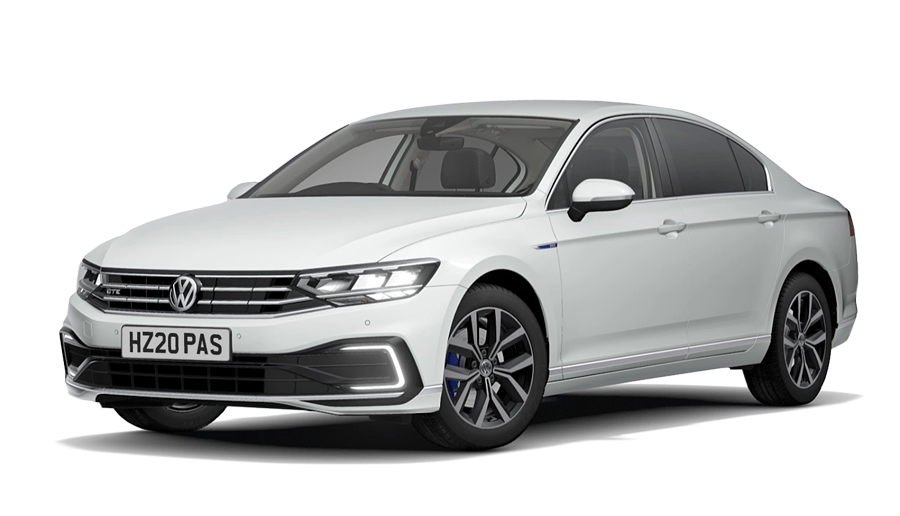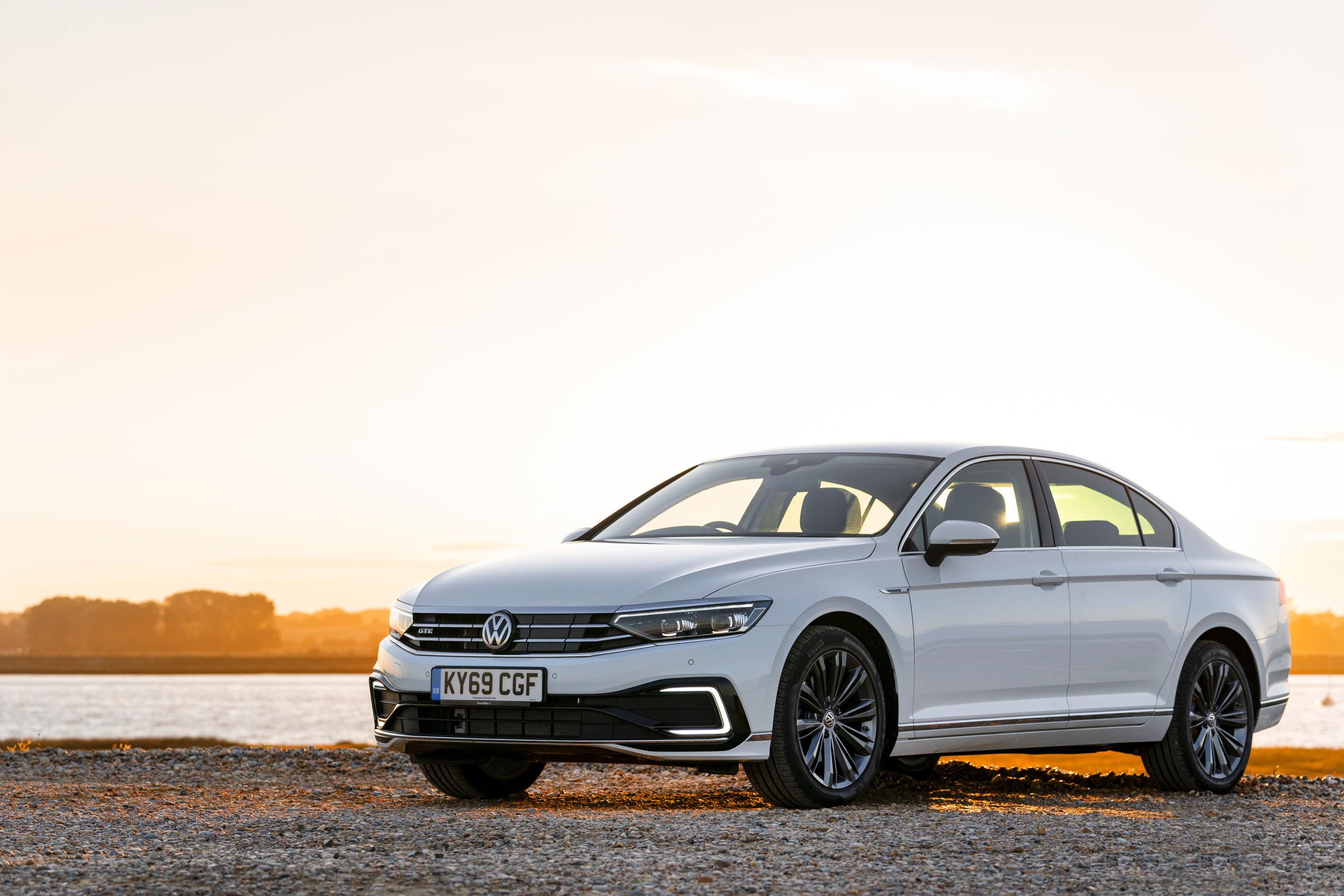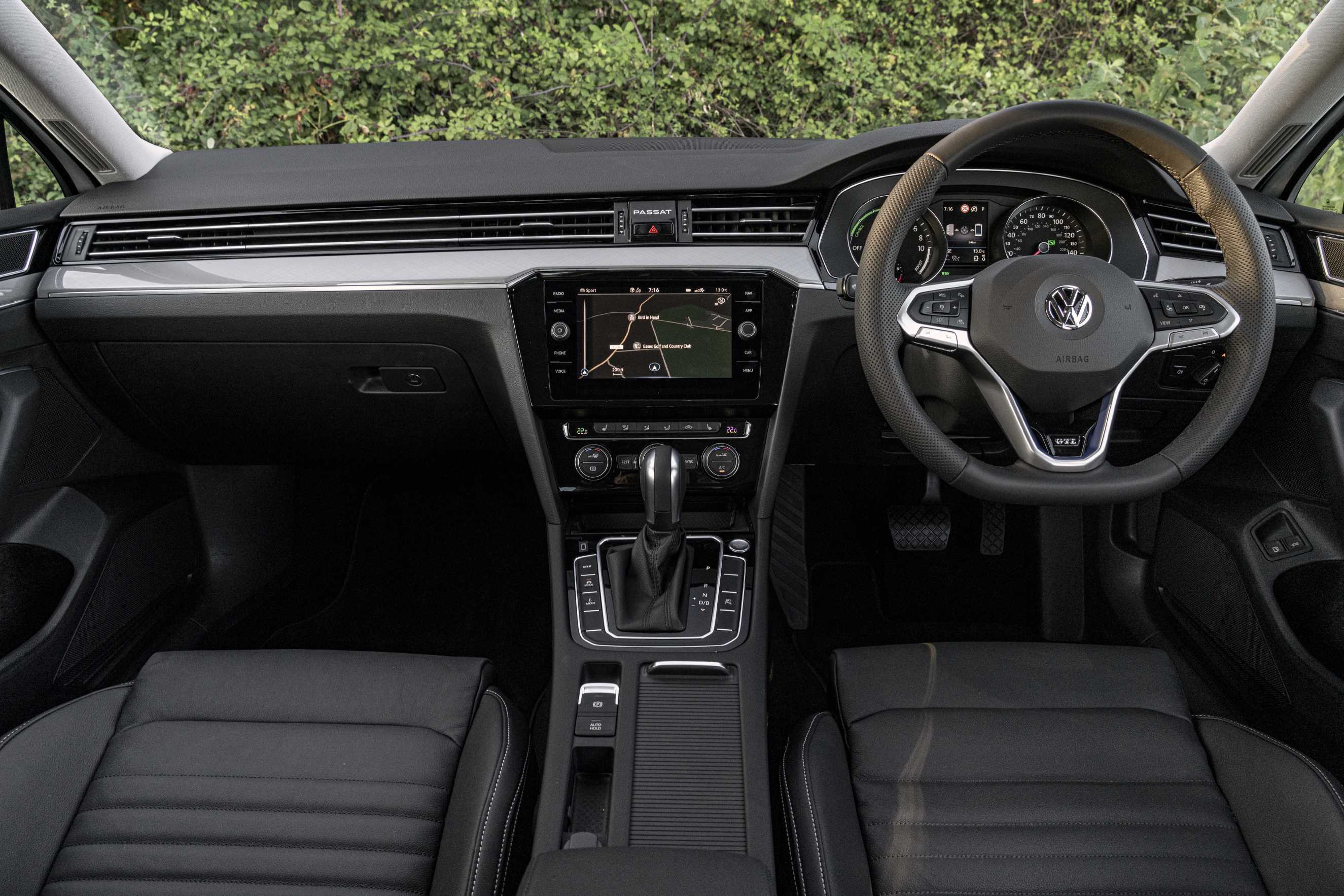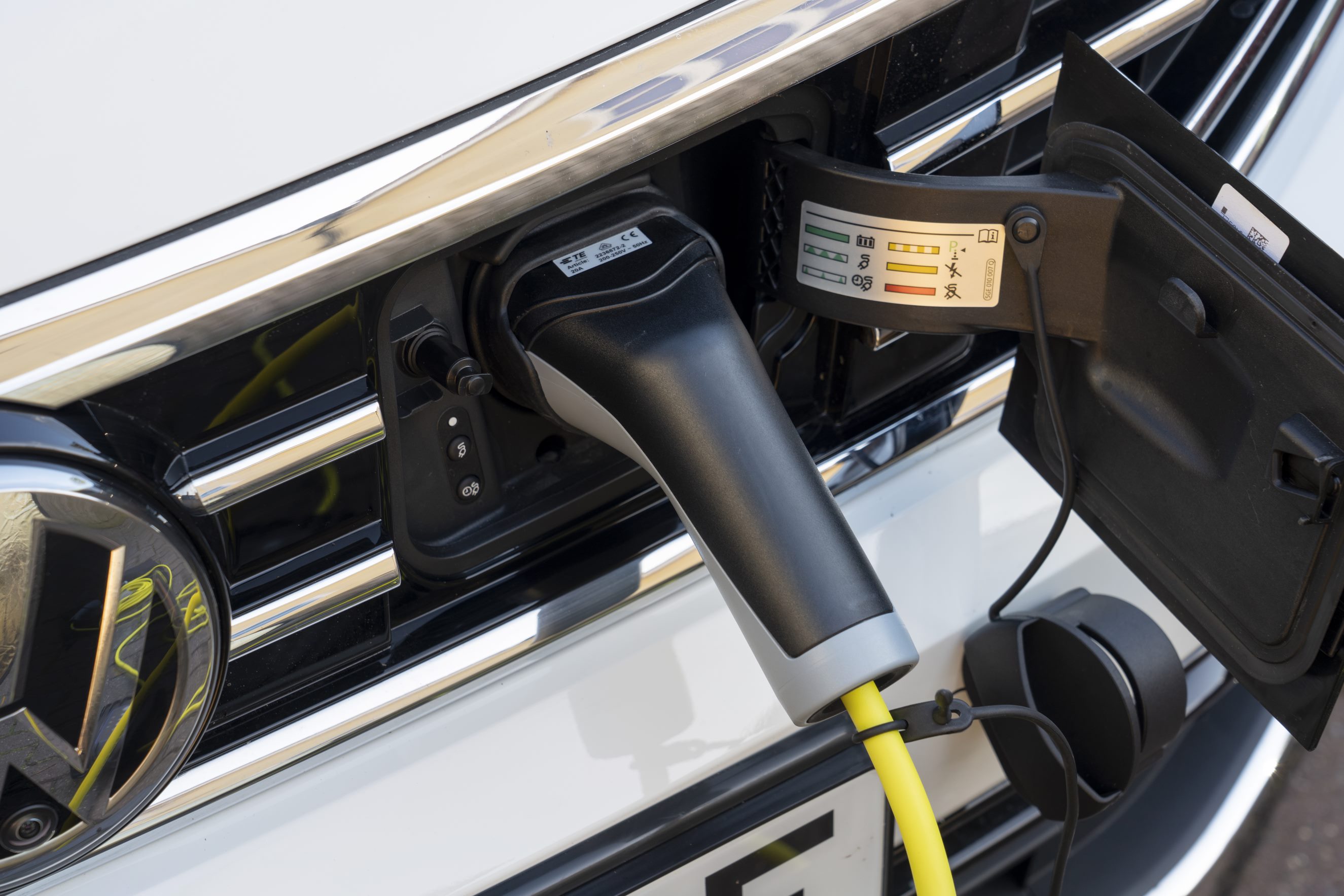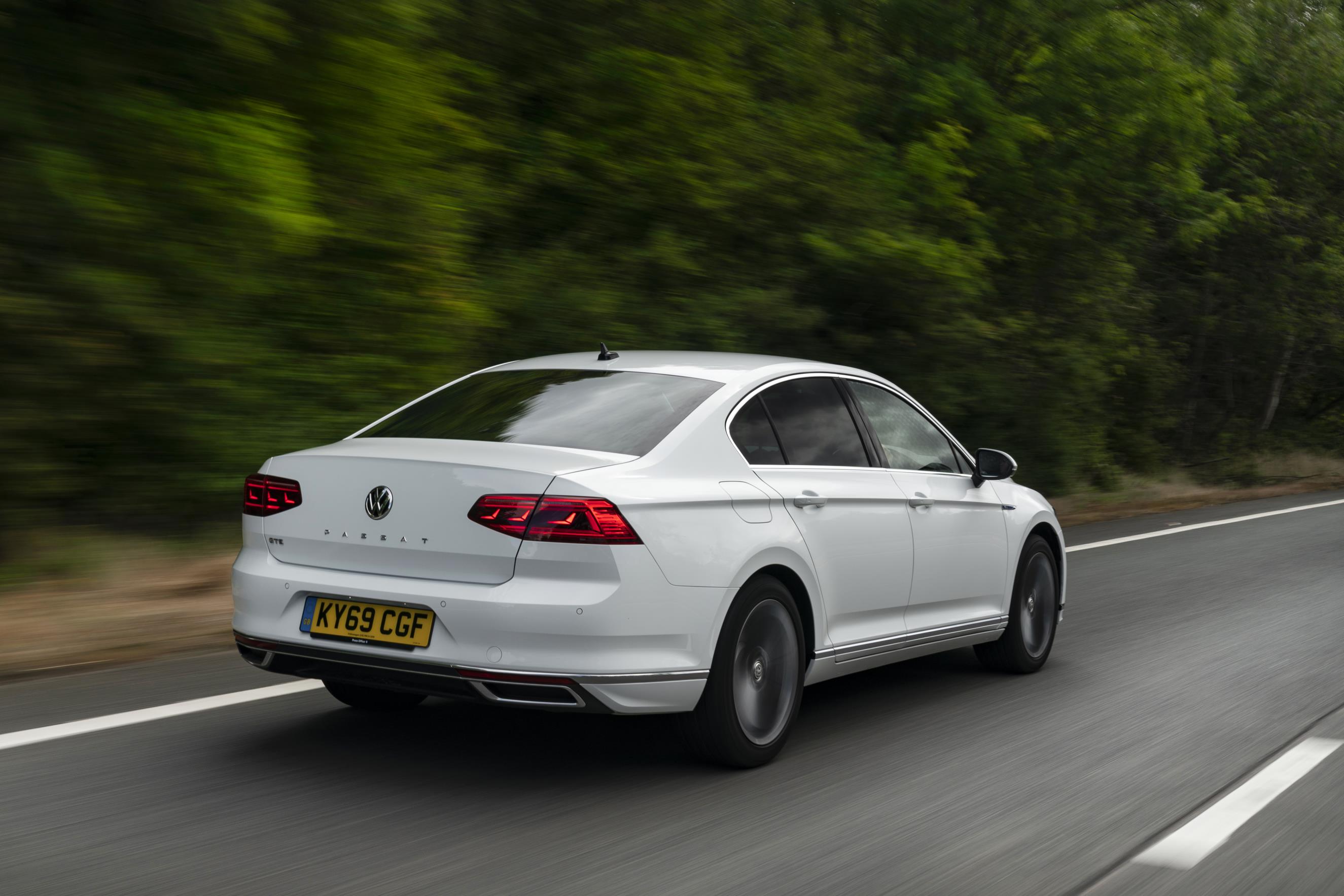Critics may have traditionally dismissed it as the four-wheeled equivalent of kitchen white goods, but there are plenty of good reasons why the Passat has resolutely held its own in Volkswagen’s range for decades. Beneath that unassuming, lost-in-a-crowd exterior there’s a hidden gem, with pleasingly polished road manners and a slickly executed, cavernous cabin that unquestionably gives equivalents from the supposedly superior premium brands a run for their money.
Understandably, it was the frugal TDI diesel versions of the Passat Saloon and Estate that for a long time were the default choice of savvy families and canny corporate fleet managers. Then, in 2015, the Passat GTE plug-in-hybrids came on stream with a similarly economy-focused and arguably more environmentally sound proposition. Combining a turbocharged 1.4-litre petrol engine providing 154 bhp with a 113 bhp electric motor, the GTE models promised three-figure fuel economy and could theoretically tackle journeys of up to 31 miles purely electrically.
Two versions shared this engine and motor set-up – the well-equipped GTE and the even more indulgently kitted out GTE Advance – and their mechanicals didn’t change when in 2019 both benefited from a mid-life facelift. A useful gain was, however, made in the battery department – its capacity increased from the original car’s 9.9 kWh to 13 kWh, endowing the electric motor with 40% more staying power, according to Volkswagen. Other changes were much as you’d expect, and included a modernised and expanded onboard technology tally and a few cosmetic nips and tucks inside and out.
The fact that the Passat GTE is one of the ‘more mature’ plug-ins on the block means used models are in reasonably plentiful supply, with prices now kicking off at around £11,000 for an early model with the kind of mileage that could understandably be a deal-breaker for some would-be owners, or around £17,000 for a later example with far fewer Tarmac tales to tell. Used as intended, and routinely charged at home or at work, the Passat is a highly recommendable used buy, combining level-headed running costs with impressive versatility and trademark Volkswagen integrity. Here’s what to look for if you think it might be up your street…
Prices
Low emissions, high quality, expansive and well-equipped accommodation and the engineering exactitude behind the respected Volkswagen badge - it’s no wonder the Passat GTE hit the bullseye as a tax-efficient company car from the get go. Plenty of examples on the used market bear testament to this double-edged sword – they’ve clocked up potentially hair-raising mileages helping business users ply their trades, but temptingly low prices starting from as little as £11,000 reflect that.
Around 80,000 miles seems to be an average for many Passat GTEs registered between 2016 and 2018, but we’d wager that a high proportion of these would have been covered at a motorway cruise, which can be considerably kinder to a car than the cut-and-thrust of urban driving, so we’d advise you not to dismiss them out of hand. If you’re too spooked by telephone number mileages, you’re far from alone though, and you’ll need to budget upwards of £17,000 for a Saloon with a more modest total of circa 40,000 miles, or in the region of £20,000 for the more sought-after estate. Facelifted models from 2019 and beyond are naturally thinner on the ground, and if you like the idea of their elongated electric-only driving range and slightly more contemporary tech we found the less popular saloon versions starting from £22,000, and estates commanding upwards of £28,000.
Spotting a Volkswagen Passat GTE
When it comes to the way the Passat looks there seem to be two distinct trains of thought. Some see it as too sensible and strait-laced for its own good, while to others it’s a coolly downplayed alternative to the posturing, aggressively-snouted premium brand players. Either way, it’s a handsome enough car in both body styles in our opinion, and the GTE and GTE Advance models accentuate its positives with their exclusive radiator grille, LED or Matrix LED headlights and unique ‘C-Signature’ daytime running lights. The grille is fringed in the distinctive blue Volkswagen uses to mark out its hybrids, and as further clues to the models’ special status this is also used for the front brake calipers and the GTE badging. Don’t be fooled by the fact that the latter is unashamedly modelled on Volkswagen’s evocative GTI insignia by the way – if you’re looking for slingshot performance and absorbing handling you’ve come to the wrong place, but that’s not to say the GTE is without merit on the move. Composure and polished refinement are its stand-out traits, but although it undoubtedly feels heavy due to its electrical payload we reckon it’s still a satisfying enough drive for all but the most demanding members of its target audience.
Inside, that ‘e-mobility’ blue colour scheme is carried through into the ambient lighting and the stitching for the leather trimmed multifunction steering wheel and ‘GTE’ gear knob. That’s about the extent of the design flair in the cabin, but with its inviting-looking Alcantara and leather-upholstered seats, upscale trim materials and well executed infotainment and connectivity it’s a pleasingly premium-feeling environment to spend time in nonetheless. The feelgood factor ratchets up a few notches further inside the GTE Advance models as well - here you’ll find extra features such as supple Nappa full leather upholstery, a panoramic glass sunroof, a fully digital ‘Active Info Display’ in place of the standard car’s exclusive GTE instrument cluster and an upgraded version of the GTE’s touch-screen infotainment system.
Top tech
On paper the Passat GTE’s turbocharged 1.4-litre TSI engine may look a bit too lily-livered to give this relatively large model a decent turn of speed, but thankfully this fine little unit feels like it’s punching above its weight in most of the many Volkswagen Group models it powers, and the Passat is no exception. On top of the 154 bhp it brings to the table, the electric motor can also of course wade in with its 113 bhp, giving a combined system output of 215 bhp.
To feel the full force of both power sources from the outset the driver can select GTE mode at the touch of a console-mounted button. As well as delivering petrol and electric power simultaneously, thereby giving the Passat GTE the clout to sprint to 62mph from rest in circa seven seconds, GTE mode also firms up the car’s adaptive suspension, quickens its steering and adjusts the shift profile of its twin-clutch DSG automatic gearbox so that it reacts more quickly and hangs on to lower gears for longer to make the most of the available power.
Three more driving modes are also selectable by the driver to either prioritise electric-only travel, mix-and-match hybrid driving or conservation of battery power for exactly when it’s needed. The impact of the various modes on the energy flow and the load condition of the lithium-ion battery is illustrated by an image in the touch-screen display, which also shows when the kinetic energy generated during braking is being converted into electricity by regenerative braking and fed directly to the battery.
Fuel economy
Depending on the model generation you’re looking at Volkswagen quotes anything between 156mpg and 235mpg as an official fuel economy figure for the Passat GTE. Before you start planning Caribbean holidays with your potential fuel savings these figures should be taken with many pinches of salt, because they’re generated under test conditions and you’ll never reach anything close. Around 70mpg is a more realistic total, and that’s of course definitely not to be sniffed at, but it will only be achievable if the hybrid system is used as intended. Get out of the habit of charging the battery regularly and along with the electric motor it will simply become extra ballast, weighing the car down and dragging economy in the opposite direction – do this and around 40mpg is the very best figure you’re likely to see.
The most attractively priced used versions of the Passat GTE will be earlier models equipped with the original 9.9 kWh battery, which has since had a boost to 13kWh in the more recent facelifted cars. Volkswagen reckons the smaller battery gives a pure electric range of around 31 miles, but this is based on driving in rarely repeatable ideal conditions and we’d suggest that the reality will be closer to 25 miles, which is still enough stamina to take care of many short-hop journeys and commutes. Volkswagen is currently advertising a potential driving range of up to 40 miles, achieved as part of the new WLTP test regime, for the latest GTE models equipped with the larger battery.
What goes wrong?
We’re thankfully not aware of any problems specifically relating to the plug-in hybrid GTE models, but the Mk8 Passat on which they’re based has a few skeletons in its closet. Wiring-related braking and ESP problems, seating and seatbelt gremlins, unwarranted airbag deployment, malfunctioning child locks and faulty panoramic sunroofs on Estates are among the offenders, the majority of which have been tackled by official recalls.
New Passats were covered by a three-year, 60,000-mile warranty, and extensions to this were available at a moderate cost. The GTE’s battery is protected by a separate warranty which is applicable for eight years or 99,000 miles, whichever is reached first.
Charging
Refuelling the Passat GTE is of course as simple as releasing the petrol cap under the flap on its driver’s side flank, while recharging involves plugging one of the two cables Volkswagen supplies into the inlet neatly hidden in the radiator grille. One is compatible with household power sockets and replenishes the battery in around 4 hours 15 minutes, and the other is intended for use with wall box chargers or at public charging stations. Hooked up to a wall box it will do the job in around 2 hours 30 minutes.
From the word go Volkswagen offered Passat GTE owners the option to access plenty of the car’s functions remotely using a smartphone app, and charging is one of those. It can be started and stopped remotely and scheduled to take advantage of off-peak periods, and both the charging level and remaining range can also be displayed on the driver’s handset. Among the other features is the option to remotely activate the air conditioning to stabilise the cabin temperature ahead of a journey, and to check where the car is parked and whether its lights have been left on or its doors are unlocked.
Summary
It’s safe to say the Passat has never really been a covetable car, but the comparatively staid image it’s arguably saddled with has often denied it the credit it’s due. Beautifully built, painstakingly engineered, easy to live with and relaxing, if not engaging, to drive, it’s also one of those cars whose strengths are played to by the addition of a hybrid drivetrain.
Bag a Passat GTE Saloon or Estate with a modest five-figure mileage for £20K or less and we think you’ll be sitting pretty, but if you’re in no hurry to take the plunge it might be worth keeping an eye on competitors like sister brand Skoda’s more recently introduced Superb iV plug-in hybrid. It houses the Passat’s engine, battery and motor in an even more spacious body and includes more kit for your money. As used stocks become more plentiful and prices tail off it could become the elephant in the room for this particular virtuous Volkswagen









